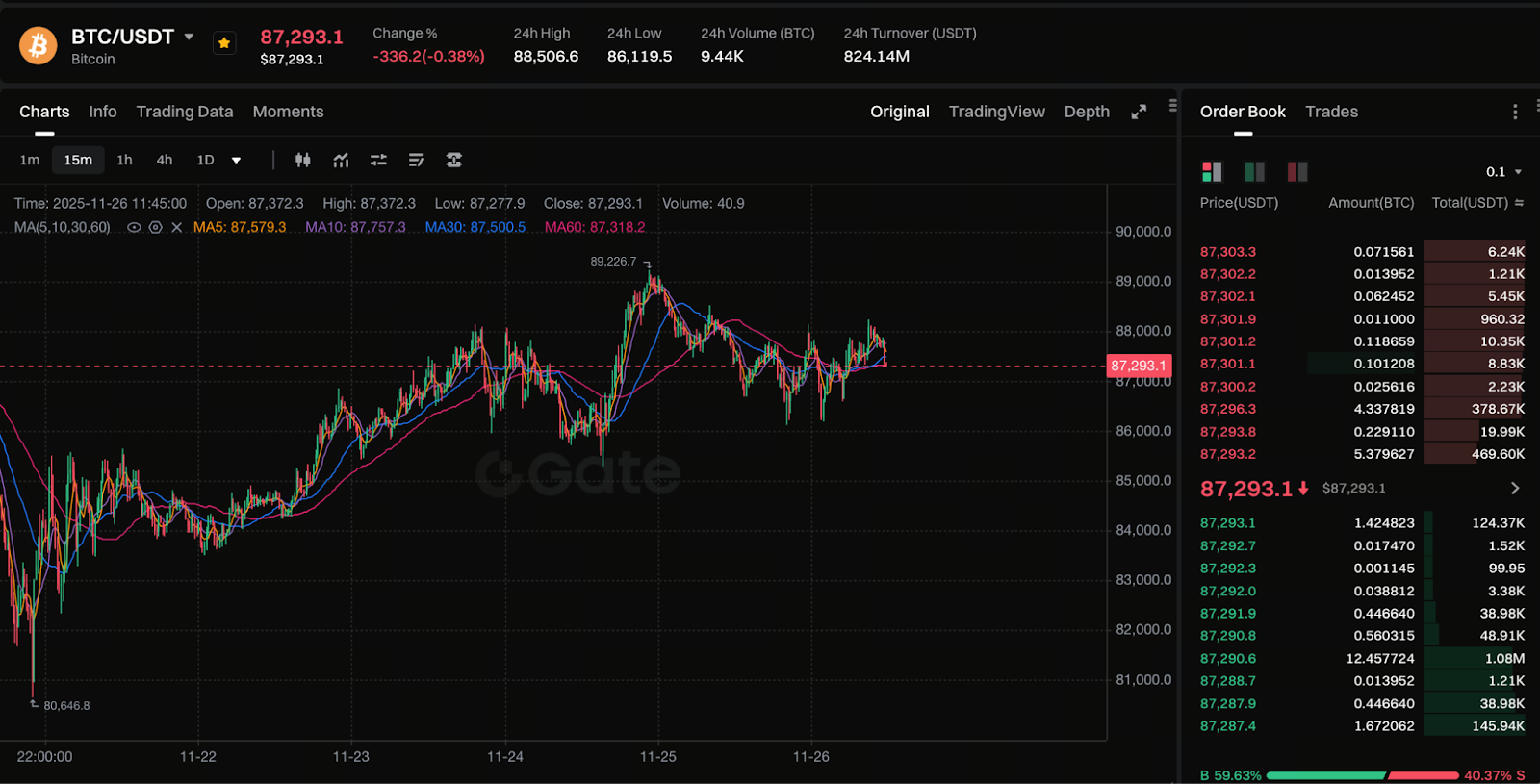Bitcoin Rebounds as Fed Rate-Cut Expectations Rise and U.S. Stocks Recover
Background: Why Markets Are Focused on Rate Cuts and Stock Performance
Global financial markets have grown increasingly sensitive to interest rate shifts in recent years. The Federal Reserve’s monetary policy, as one of the world’s leading central banks, directly affects US dollar liquidity, bond yields, and risk asset valuations. Recent US economic data shows slower growth and easing inflationary pressure, which fuels expectations for a Fed rate cut in December. Investors widely anticipate that rate cuts will inject additional liquidity into capital markets, supporting a rebound in risk asset prices.
Fed Rate Cut Expectations Intensify — Impact on Market Sentiment
Investors are closely monitoring the possibility of rate cuts, since lower rates mean cheaper borrowing and greater market liquidity. With more available capital, investors are increasingly willing to allocate funds to risk assets like Bitcoin and tech stocks. As expectations for rate cuts build, market confidence improves, boosting investor sentiment toward risk assets.
US Stock Market Recovery and Improved Liquidity — Renewed Appeal for Risk Assets
The US stock market has rallied recently, led by significant gains in technology stocks. This has lifted overall market sentiment. The combined effect of enhanced liquidity and rising risk appetite has driven fresh capital into highly volatile assets, including Bitcoin. This capital flow is providing additional momentum for Bitcoin’s price rebound.
Recent Bitcoin Price Action and Rebound Drivers

Chart: https://www.gate.com/trade/BTC_USDT
Bitcoin’s price recently dipped to around $82,000 at the end of November. With rising expectations for rate cuts and a rally in US equities, Bitcoin quickly rebounded and is now consolidating in the $85,000–$88,000 range. This rebound may mark an initial recovery phase after a period of decline.
Why is Bitcoin so responsive to rate cuts and stock market recovery? Three main factors drive this sensitivity:
- Improved liquidity: More capital in the market is available for risk assets.
- Rising risk appetite: Equity gains boost investor confidence.
- Declining safe-haven demand: In a low-rate environment, cash and bonds lose their attractiveness.
Risks and Potential Headwinds for Investors
Uncertainty remains around how markets are pricing in rate cuts. If the rate cut plan stalls, it could quickly weigh on Bitcoin and other crypto assets. Bitcoin also faces technical resistance levels and short-term volatility. While rate cut expectations and a recovering stock market are fueling Bitcoin’s upward momentum, investors should maintain a prudent approach, monitor position sizing, and implement risk diversification strategies.
Related Articles

Pi Coin Transaction Guide: How to Transfer to Gate.com

Flare Crypto Explained: What Is Flare Network and Why It Matters in 2025

2025 BTC Price Prediction: BTC Trend Forecast Based on Technical and Macroeconomic Data

How to Use a Crypto Whale Tracker: Top Tool Recommendation for 2025 to Follow Whale Moves

What is N2: An AI-Driven Layer 2 Solution
